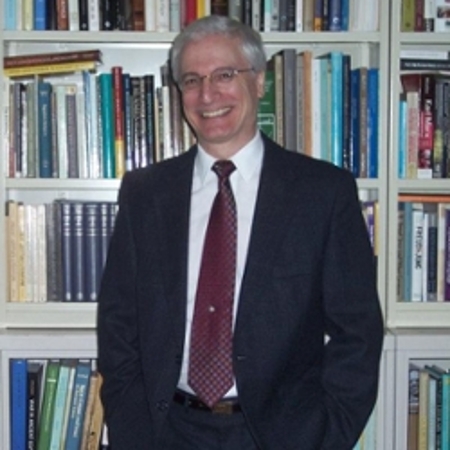John Huddlestun
Associate Professor

Office Hours: TTh 2:00-3:00, and by appointment only
Phone: 843.953.4996
E-mail: huddlestunj@cofc.edu
In his own words
As a scholar who deals primarily with history, religion, and culture of the ancient (and sometimes not so ancient) Middle East, I adopt a comparative approach both in my classes and research. Thus, discussion of any text or artifact--biblical, Mesopotamian, Egyptian or otherwise--draws upon its wider ancient environment (for example, understanding biblical wisdom literature, historiography, or prophecy as larger ancient Near Eastern phenomena). In this regard, teaching the Bible in a secular, liberal arts institution can be a subversive enterprise. Any talk of authors, redactors, compilers, and their motivating ideologies situates the biblical text within its human context, and ultimately explains it as a human product, an approach in accord with the humanities. As a historian of religion, I do not presume to get into the mind of the deity portrayed in the Bible or speculate about divine motivations aside from what is presented in the biblical text. Students frequently ask me, for example, “Why did God, who is omniscient, do X with Abraham or Job and not Y?” But as an academic in a secular institution I deal with socio-political, religious, literary and other motivating factors that might explain why the author or editor portrays the biblical deity in such a fashion, rather than timeless theological truths. Or as I tell my students: “I don’t do God.” For me, it is the compelling human dimension of ancient texts and material culture, including the Bible, that makes them most appealing as an object of study, and that allows me to ask questions that would otherwise be less relevant from a purely theological perspective. It is my goal to instill in students an appreciation for the underlying strategies and ideologies that inform these ancient writings and the cultures that produced them.
Prior to his career in academia, Professor Huddlestun worked as a professional musician, living in southern Europe and Israel. He also pursued studies at The Hebrew University of Jerusalem (modern and biblical Hebrew, Egyptology, and archaeology) before returning to the U.S. to begin graduate work at the University of Michigan in Ann Arbor.
Education
Ph.D., Biblical (Hebrew Bible) and Near Eastern Studies, University of Michigan, Ann Arbor
M.A., Biblical and Near Eastern Studies, University of Michigan
B.Mus., Music History/Literature and Performance, The Ohio State University, Columbus
Research Interests
- ancient Israel and Egypt
- historiography and royal ideology in the Hebrew Bible and ancient Near East
- identity formation and the other in the Hebrew Bible
- method and theory in comparative studies
Links
Courses Taught
- RELS 101 Approaches to Religious Studies
- RELS 117: Premodern History of Religions
- RELS 120: Religion, Art, and Culture
- RELS 201 Hebrew Bible: History and Interpretation
- RELS 202 New Testament: History and Interpretation
- RELS 225 The Jewish Tradition
- RELS 210 Theories of Religion
- RELS 223 Religions of the Ancient Near East
- RELS 310 Sacred Texts (Creation and Cosmos in the Ancient Middle East)
- RELS 360 Myth, Ritual, & Symbol
- RELS 375 History of Religions (Prophecy and Divination in Ancient Near Middle East)
- RELS 405 Seminar: The Problem of Theodicy (in Hebrew Bible and Ancient Middle East)
- RELS 450 Seminar: Prophets, Messiahs and Their Followers
Publications
“Historiography” in Oxford Handbook on Ancient Egypt and the Hebrew Bible, ed. Susan Hollis (in preparation)
Ancient Egypt and the Hebrew Bible (book in preparation, under contract with Oxford University Press)
“The First Isaiah: A Literary Polymath between Egypt and Assyria?” (chapter in preparation for edited volume)
“Ancient Egypt and Israel: History, Culture, and the Biblical Text” in The Blackwell Companion to Ancient Israel, ed. Susan Niditch (Wiley Blackwell, 2016), pp. 47-66.
“The Plagues of Egypt” (2020), “Was Moses’ Name Egyptian?” (2016), and “Akhenaten and Monotheism” (2015) -- articles online at Society of Biblical Literature website BibleOdyssey.org
“Redactors, Rationalists, and (Bloodied) Rivers: Some Comments on the First Biblical Plague.” In Literature as Politics, Politics as Literature: Essays on the Ancient Neat East in Honor of Peter Machinist (Eisenbrauns, 2013), pp. 207-221.
“Nahum” in The Oxford Encyclopedia of the Books of the Bible, ed. Michael D. Coogan (Oxford, 2011), vol 2, pp. 100-110.
“Nahum, Nineveh, and the Nile: The Description of Thebes in Nahum 3:8-9,” Journal of Near Eastern Studies 62.2 (April 2003), pp. 97-110.
“Divestiture, Deception, and Demotion: The Garment Motif in Genesis 37-39,” Journal for the Study of the Old Testament 98 (2002), pp. 47-62.
“Unveiling the Versions: The Tactics of Tamar in Genesis 38:15,” Journal of the Hebrew Scriptures, vol. 3/article 7 (2001).
editor, Divine Commitment and Human Obligation: Selected Writings of David Noel Freedman, 2 vols.: “Ancient Israelite History and Religion” and “Hebrew Poetry and Orthography” (Eerdmans, 1997), with "Editor’s Introduction," pp. viii-xiv.
“’Who Is This That Rises Like the Nile?’ Some Egyptian Texts on the Inundation and a Prophetic Trope” in Fortunate the Eyes That See: Essays in Honor of David Noel Freedman in Celebration of His Seventieth Birthday, eds. Astrid B. Beck et al. (Eerdmans, 1995), pp. 338-363.






